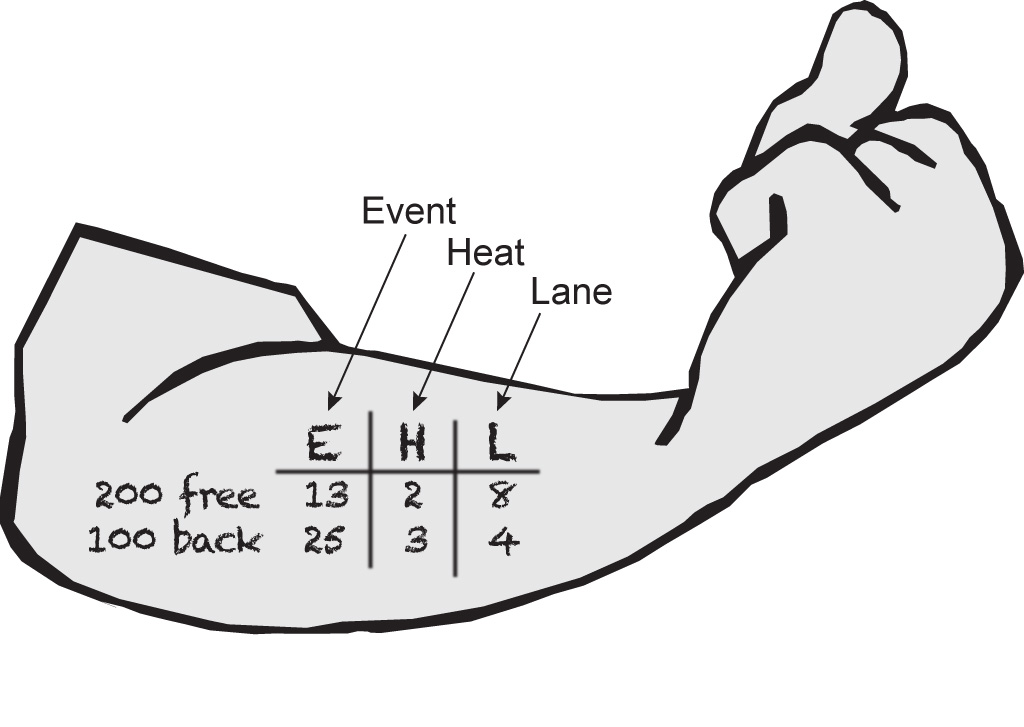Swim Meet Tips
New to swim meets? Here is some basic information and tips for preparing for and attending meets with your swimmer.
Attending meets is an important part of the sport of swimming. Meet competition allows swimmers and parents to see the results of the time and effort put into going to practice! As professionals in the sport, our coaches know that statistically speaking your children are more likely to stay with competitive swimming if they attend meets because meets are part of the reward system that drives them to continue to train and improve over time. Meets are also great opportunities for swimmers and swim parents to socialize and build friendships.
Each season’s meet schedule is posted to the team’s website (www.gatorswimclub.com). Each meet listed on our website has a “meet information” file available to provide lots of details including meet location, events, and fees. GSC will send out important information in the days before a meet including a team itinerary (where to be and when) and coaching requests.
Please watch your e-mail for notifications about commitment deadlines for the meets. We are not able to accommodate late entries, and once your swimmer is entered in a meet any fees will be charged even if plans change and you don’t attend; this is because we have by that time committed attendance to the host team and have to pay our fees to them regardless of how many of our swimmers actually attend and compete.
Some meets may have qualifying standards, meaning swimmers must have achieved specific time cuts to be eligible to swim events at those meets; time standards are posted to the GSC website and the meet schedule indicates when these standards apply.
Before the Meet
In preparing for a meet, you will want to pack the things your swimmer needs, including the following:
- Team cap and swimsuit
- Goggles (an extra pair is always a good idea!)
- A couple of towels
- Sunscreen for outdoor meets
- Water bottle to stay hydrated
- Warm clothes to put on between events, including shoes, especially for cold-weather meets
- Snacks should be light, healthy food—no junk food!
You will also want to prepare the things you need to be comfortable at the meet! Swim meets can be long and hot, so the more prepared you are, the more you will enjoy the experience too. Suggested items include the following:
- Foldable outdoor chairs
- Pop-up tents/canopies for shade/shelter from rain
- Highlighters for heat sheets and sharpies for event-marking swimmers
- Snacks and water bottles
- Sunscreen and bug repellant for outdoor meets
At some meets swimmers will all sit together in designated areas, and at others they can sit with their parents as long as they are watching the progression of the meet so they are behind the blocks at the right time. Swimmers new to meets can stay near the coaches for help getting to their races.
Be sure your swimmer gets enough rest in the days before the meet!
At the Meet
The GSC coaches will be stationed in one location within the designated coach’s area on the pool deck. Your child’s group coach may or may not be attending a meet, but there will be familiar faces there! Team itineraries list the names of coaches attending each meet session.
Before each meet starts, team members gather with the coaches for stretching and the in-water warm-up. Throughout the course of the meet, all swimmers need to check in with a coach before and after each race for instructions, last minute reminders, calming of nerves, encouragement, and feedback on their swims.
Heat sheets that list each event, heat, swimmer, and lane may be available for purchase at meets. For some meets, GSC will receive heat sheets ahead of time to distribute them as PDFs to attending families. An app that also can be used to follow events at meets is MeetMobile; some meets provide live updates to the app as events are completed.
It is helpful to write your child’s event information on their arm or leg to give them a reminder of which events they are swimming as well as which heat and lane they are in. This is best done with a sharpie, and should be done on dry skin. Even if you only know events and not heats or lanes, it helps to start the marking and coaches can fill in the rest. Here is a sample:

As swimmers get older they are less interested in having the event lists on their arms or legs. The same event information on index card tucked in the swim bag does the trick!
Handling Disqualifications
Disqualifications are a part of swimming, but can be upsetting to our athletes. It is important for swimmers and parents to know that disqualifications are quite common, especially with younger swimmers and those new to competitive swimming, but they happen even at the highest levels of the sport. It’s very important to understand that getting DQ’d simply means a mistake was made during the swim that violated a rule of competition. Some rules are broad (everyone must touch the wall during a turn) while others are more specific (butterfly and breaststroke require a 2-hand touch at all turns and at the finish). A DQ doesn’t negate how your child swam, did a perfect turn, or had a great start, and the takeaway should be “OK, we will do more work on that piece in practice.” Coaches will talk to the swimmer about the DQ and provide support and reassurance, but you can really help by reinforcing to your swimmer that all swimmers get DQ’d over the course of their careers, including the top athletes in the world and even at international events like the Olympics!







